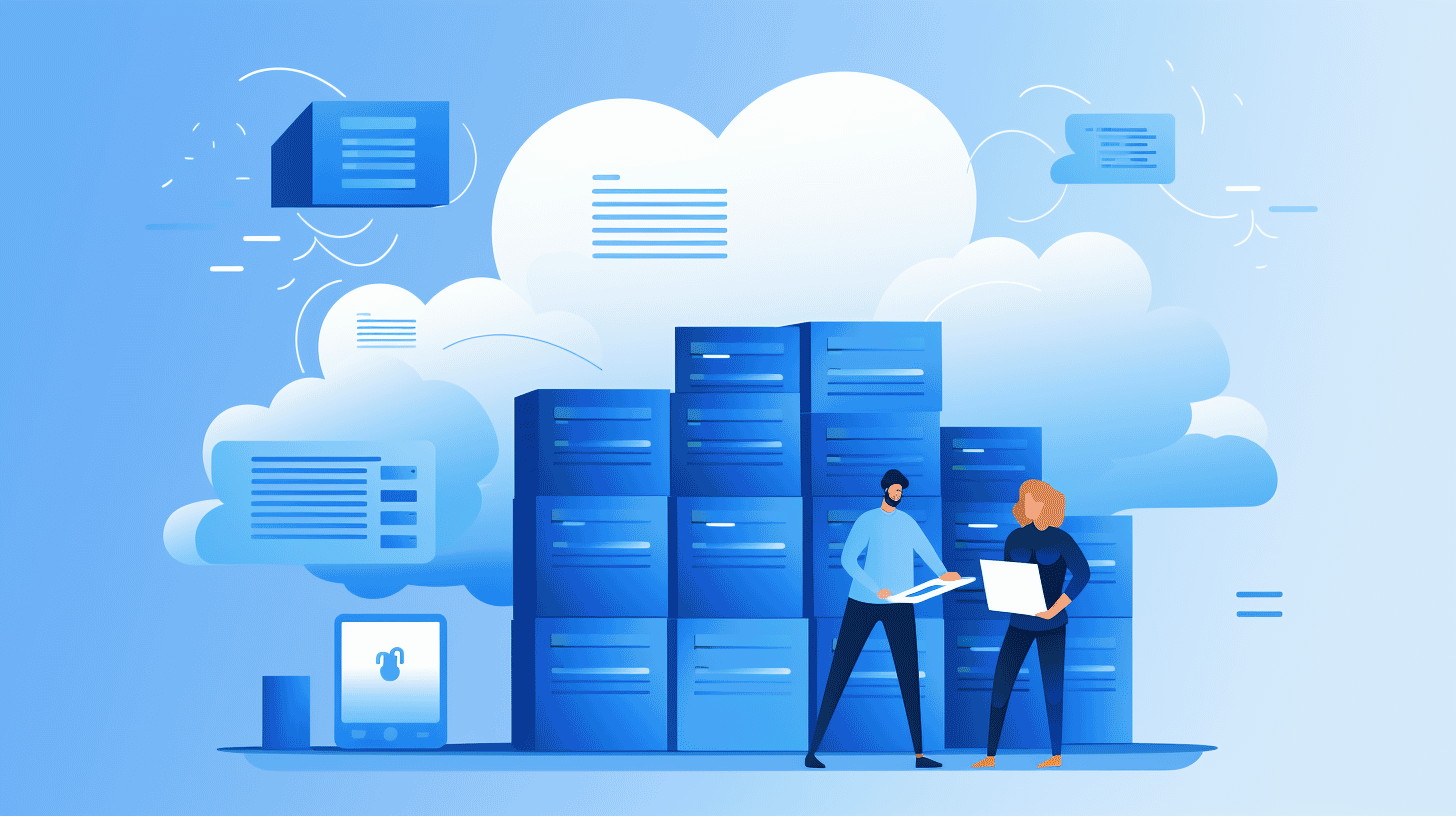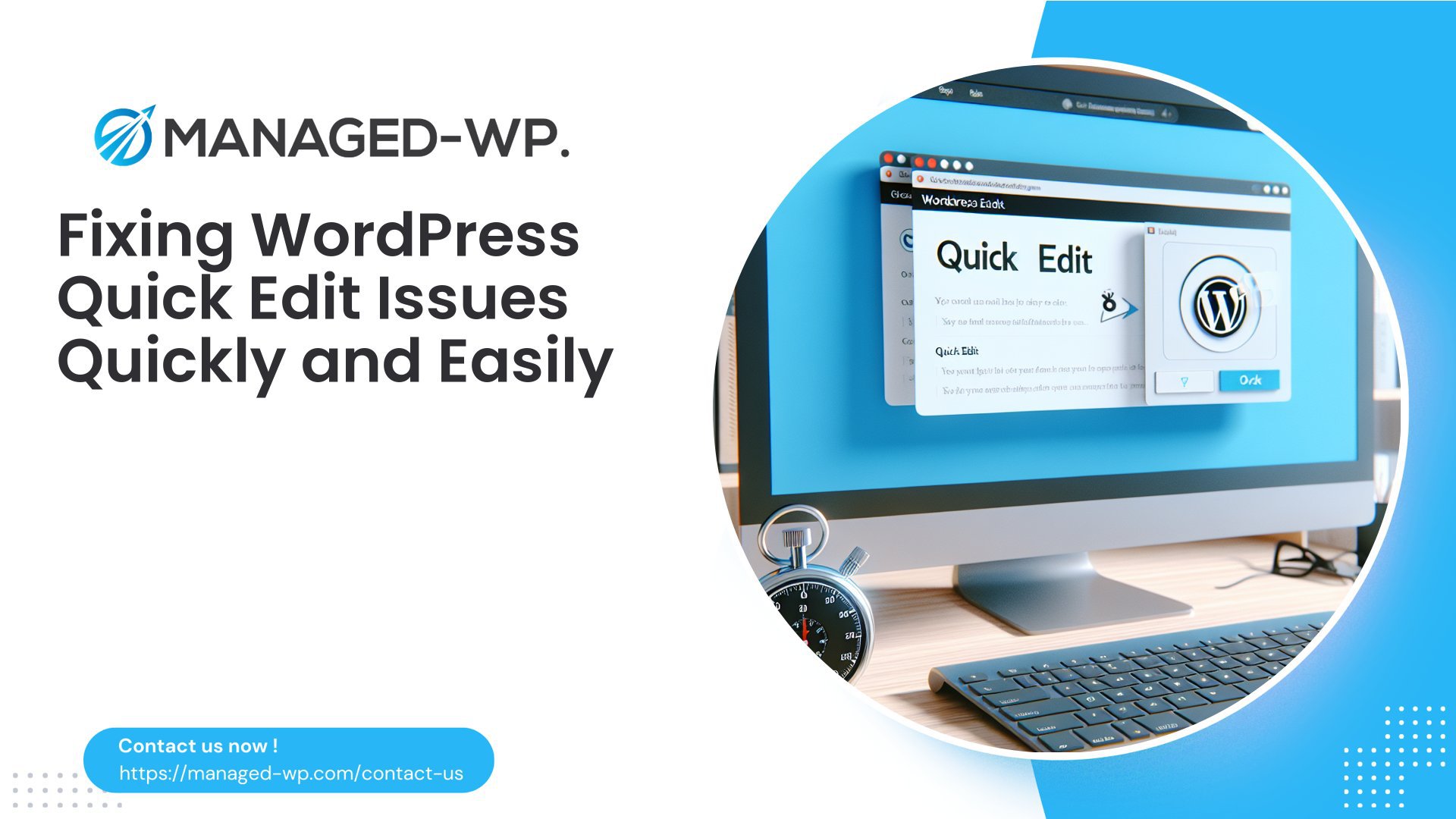在当今的数字世界中,拥有强大的在线影响力对于任何企业的成功都至关重要。如果您在 WordPress 上运营在线商店,那么您已经走在了正确的道路上。WordPress 是一个功能强大的平台,提供灵活性、功能性和易用性。但与任何其他技术一样,它需要定期维护才能保持平稳高效地运行。
维护您的 WordPress 商店不仅仅涉及更新内容和添加新产品。它还意味着要随时掌握软件更新、优化网站速度、实施安全措施等等。忽视这些维护任务可能会导致网站运行缓慢、存在安全漏洞以及客户体验不佳。
在本文中,我们将探讨 10 大维护技巧,以确保您的 WordPress 商店长久运营并取得成功。从定期更新到备份策略、从安全措施到 SEO 增强,我们将一一介绍。所以,系好安全带,准备好释放您的 WordPress 商店的全部潜力吧!🚀
定期更新的重要性
定期更新对于维护任何网站的安全性、功能性和整体健康都至关重要。无论是个人博客还是商业网站,忽视更新都可能导致严重后果。在本节中,我们将探讨定期更新的重要性以及它们如何有助于网站的整体成功。
核心更新
定期更新的关键要素之一是保持核心软件为最新。对于 WordPress 而言,这意味着更新到平台的最新版本。以下是更新的重要性:
- 增强的安全性: 定期更新可确保您的网站配备最新的安全补丁,保护其免受潜在漏洞的侵害。过时的软件通常是黑客的常见切入点,这已不是什么秘密。通过保持最新状态,您可以大大降低安全漏洞的风险。
- 性能改进: 核心更新通常包括性能改进、错误修复和新功能,这些功能可提高网站的整体速度和功能。通过跟上最新更新,您可以确保访问者拥有无缝的浏览体验。
- 兼容性: 随着技术的发展,您网站的依赖性也在不断变化。定期核心更新可确保与最新的 Web 标准、主题和插件兼容,从而防止任何可能导致您的网站崩溃或故障的兼容性问题。
主题更新
网站的外观和设计对于创造积极的用户体验至关重要。过时的主题不仅会影响整体美观,还会带来安全风险。以下是您应该定期更新主题的原因:
- 安全: 过时的主题是黑客的主要目标。通过更新主题,您可以消除潜在的漏洞并确保您的网站保持安全。网络攻击正在增加,保持警惕更新对于确保您的网站安全至关重要。
- 新功能: 更新通常会带来新功能、设计增强功能和性能改进。通过更新主题,您可以解锁新的自定义可能性,让您随时了解最新趋势和功能。
- 错误修复: 主题更新通常包括解决用户报告的问题的错误修复。通过保持更新,您可以确保解决可能影响用户体验的任何潜在错误。
插件更新
插件是任何 WordPress 网站不可或缺的一部分,负责添加功能和特性。但是,如果不加以管理,它们也可能成为安全漏洞的来源。以下是定期更新插件至关重要的原因:
- 安全漏洞: 过时的插件是黑客的常见切入点。通过更新插件,您可以消除任何已知的安全漏洞并降低危及网站安全的风险。
- 性能改进: 插件更新通常包括性能增强和效率改进。通过更新插件,您可以优化网站的速度和功能,提供更好的用户体验。
- 兼容性: 插件经常需要更新以确保与最新版本的 WordPress 兼容。通过保持更新,您可以避免任何可能破坏网站功能的兼容性问题。
值得注意的是,过时的插件是 WordPress 上超过 50% 安全事故的重要来源[^1^]。定期更新可显著降低安全漏洞的风险,并确保您的网站保持安全和正常运行。
为了维护一个安全且功能齐全的网站,企业主必须具备 WordPress 维护的必要技能。要了解有关这些技能的更多信息,请查看我们的文章 WordPress 维护的基本技能.
维护备份以提供保护
🔒 简介:通过定期备份保护您的数据
在当今的数字时代,数据是每项业务的核心。从客户信息到关键文件,丢失宝贵的数据可能是一场噩梦。这就是为什么定期备份对于保护您的数据免受意外丢失或不可预见的灾难至关重要。它让您高枕无忧,确保您的信息安全,并且在最坏的情况下可以恢复。在本节中,我们将探讨不同的备份策略,以满足高流量和低流量网站的需求,以及备份插件的使用。
🔄 高流量网站的每日备份
高流量网站经常会不断发生变化,经常发布新内容并定期与用户互动。为了确保数据备份保持最新状态,建议对高流量网站进行每日备份。此策略可降低数据丢失风险,同时最大程度地减少对网站性能的影响。
以下是对高流量站点实施每日备份时需要考虑的一些关键点:
- 计划的自动备份: 使用可靠的备份解决方案(如 UpdraftPlus 或 BackupBuddy)定期安排自动备份。这样就无需手动备份,节省您的时间和精力。
- 增量备份: 选择增量备份,它只保存自上次备份以来所做的更改。这种方法可以减少备份大小并加快恢复过程。
- 异地存储: 将备份存储在安全的异地位置,例如云存储或外部服务器。这样,即使您的网站服务器出现故障,您的备份仍会保持完整。
🗓️ 每周备份流量较低的网站
流量较低的网站可能不会像流量较高的网站那样频繁地更新内容或与用户互动。因此,每周备份策略可以提供足够的保护,而不会给网站资源带来不必要的压力。
对于流量较低的网站,请考虑以下每周备份指南:
- 选择一致的备份日: 选择一周中的特定日期持续执行备份。这可以帮助您保持井然有序,并确保不会忽略备份。
- 完整备份: 由于流量较低的网站更新较少,因此建议每周进行一次完整备份。这样可以捕获一周内的所有数据和更改,提供全面的备份快照。
- 验证备份完整性: 每次备份后,请花点时间验证备份文件的完整性。此步骤可确保您的备份已准备好恢复,让您高枕无忧。
💾 使用 UpdraftPlus、BackupBuddy 等备份插件
备份插件是简化备份过程并提供附加功能以增强数据保护的宝贵工具。两个值得考虑的流行备份插件是 UpdraftPlus 和 BackupBuddy。
- UpdraftPlus: 这款广泛使用的备份插件提供了一系列功能,包括自动备份、轻松恢复和安全的异地存储选项。它与 Google Drive、Dropbox 和 Amazon S3 等流行的云存储服务无缝集成。
- 备份伙伴: 使用 BackupBuddy,您可以安排定期自动备份,创建完整的站点备份并将其存储在安全的异地位置。它还提供恶意软件扫描和恢复工具等功能。
🛡️ 总之,备份可以防止数据丢失。
数据是一种宝贵的资产,丢失数据可能造成严重后果。通过实施针对您网站流量的适当备份策略并使用可靠的备份插件(如 UpdraftPlus 或 BackupBuddy),您可以保护您的数据并确保其可恢复性。请记住,定期备份是您的安全网,可让您免受潜在灾难的困扰,并为您的在线状态提供安心保障。
优化网站速度
在当今快节奏的数字世界中,网站速度至关重要。加载缓慢的网站会导致用户感到沮丧、跳出率更高,并对搜索引擎排名产生负面影响。为了确保无缝的用户体验并优化网站速度,请采取以下一些关键步骤:
清除网站缓存
缓存是网络文件的临时存储,可以更快地检索数据。清除网站缓存可以显著提高网站速度,因为它可以消除任何可能减慢加载过程的过时或不必要的数据。以下是清除网站缓存的方法:
- 清除浏览器缓存: 指导用户按 Ctrl + Shift + Delete(Windows)或 Command + Shift + Delete(Mac)清除浏览器缓存。这将有助于确保他们正在查看您网站的最新版本。
- 清除服务器端缓存: 如果您使用的是 WordPress 等内容管理系统,则有各种插件可以帮助您清除服务器端缓存。一个流行的选项是 优化WordPress网站维护 插件,它可以自动执行许多维护任务,包括清除缓存。
请记住,定期清除缓存非常重要,以确保您的网站始终向用户提供最新、最快的版本。
优化数据库
数据库在存储网站信息方面发挥着至关重要的作用,但如果不进行优化,则可能会降低网站性能。您可以采取以下几个步骤来优化数据库:
- 清理未使用的数据: 识别并删除任何不必要的数据,例如草稿帖子、旧版本、垃圾评论或未使用的插件。这将减少数据库的大小并缩短查询时间。
- 优化数据库表: 使用插件或内置优化工具来优化您的数据库表。此过程会重新组织数据和索引,使数据库查询更快、更高效。
通过定期优化数据库,您可以确保网站后端精简高效,从而加快页面加载时间。
检查断开的链接
无效链接不仅会让用户感到沮丧,还会对 SEO 产生负面影响。当网站包含无效链接时,搜索引擎机器人在抓取网站时会遇到错误,这可能会导致排名下降。以下是检查和修复无效链接的方法:
- 使用链接检查工具: 有几种在线工具可以扫描您的网站以查找损坏的链接。这些工具将为您提供损坏链接及其对应页面的列表,以便您修复它们。
- 更新内部和外部链接: 确定断开的链接后,请使用正确的 URL 进行更新。请确保检查任何可能指向不再存在的页面的内部链接。
定期检查和修复断开的链接不仅可以改善用户体验,还可以提高搜索引擎排名。
总之,优化网站速度对于提供无缝的用户体验和提高搜索引擎排名至关重要。通过遵循以下步骤 - 清除网站缓存、优化数据库和检查断开的链接 - 您可以确保您的网站快速高效地加载,让您的用户保持参与度和满意度。
请记住,即使页面加载时间延迟一秒钟也会产生严重后果,因此请花时间优化网站速度并获得性能提升的回报。🚀
定期维护
维护 WordPress 网站对于保持其平稳运行和确保最佳性能至关重要。定期维护有助于在潜在问题成为重大问题之前发现并解决它们。定期维护不仅可以让您修复错误和更新插件,还可以确保您的网站安全且最新。以下是为什么定期维护应该成为每个网站所有者的优先事项:
确保最佳性能
定期维护 WordPress 网站有助于确保其继续以最佳状态运行。这包括更新主题和插件、优化数据库和清除不必要的文件等任务。通过定期维护您的网站,您可以提高其速度和性能,为您的访问者提供更好的用户体验。
预防安全漏洞
网络安全是网站所有者关注的重点。定期维护在防止安全漏洞和保护您的网站免受恶意攻击方面起着至关重要的作用。在维护期间,您可以使用最新的安全补丁和修复程序更新 WordPress 核心文件、主题和插件。这有助于消除黑客可能利用的任何漏洞,从而确保您的网站安全无虞。
修复错误和故障
即使设计精良的 WordPress 网站也可能会偶尔出现错误和故障。这些问题会影响您网站的功能和用户体验。通过定期维护,您可以在这些错误造成严重问题之前发现并修复它们。这包括测试您网站的表单、链接和交互元素,以确保一切按预期运行。
提高 SEO 性能
搜索引擎优化 (SEO) 对于吸引自然流量到您的网站至关重要。定期维护可以提高您网站的 SEO 性能。通过确保您的网站是最新的、快速的、没有错误的,您可以提高在搜索引擎结果中排名更高的机会。定期更新您的内容和优化网站结构也有助于吸引更多的自然流量。
延长网站寿命
定期维护可以延长 WordPress 网站的使用寿命。通过尽早发现和解决潜在问题,您可以避免可能导致长时间停机甚至网站丢失的重大故障。通过定期维护来照顾您的网站可以帮助您从长远来看避免昂贵且耗时的紧急维修。
进行审计
定期维护还可以让您对网站及其功能进行审核。这些审核可以帮助您确定需要改进的地方并采取必要的措施。通过了解用户如何与您的网站互动,您可以做出数据驱动的决策,以优化其性能并增强用户体验。
总之,定期维护是 WordPress 网站管理的一个重要方面。它可以确保最佳性能、增强安全性、修复错误、改善 SEO、延长网站的使用寿命,并允许审核以改进功能。确保在您的网站管理计划中包含定期维护,以确保您 WordPress 网站顺利高效地运行。💪🚀
实现安全密钥
在当今的数字环境中,保护用户数据至关重要。随着网络威胁和数据泄露的增加,企业需要采取主动措施来保护敏感信息。增强数据安全性的有效方法之一是实施安全密钥。🔒
用户数据保护定期变更
定期更换安全密钥可以显著加强对用户数据的保护。通过定期轮换密钥,您可以确保即使一个密钥被泄露,一段时间后该密钥也会失效。这为您的系统增加了额外的安全保障,并降低了未经授权访问的风险。考虑实施定期密钥更换的以下好处:
- 增强数据加密:安全密钥采用先进的加密算法来保护用户数据。定期更换密钥可确保旧密钥无法用于解密数据。
- 降低未经授权访问的风险:通过轮换密钥,您可以防止未经授权的用户长时间访问敏感信息。即使攻击者设法获取密钥,密钥也会很快过期,从而限制了他们利用密钥的能力。
- 符合安全标准:许多监管框架(例如《通用数据保护条例》(GDPR))都要求组织采取措施保护用户数据。定期更改安全密钥表明您对数据安全的承诺,并有助于您遵守此类标准。
定期更改安全密钥似乎很麻烦,因为它需要在各个系统和设备之间协调更新。但是,增强数据保护的好处远远超过所需的努力。为了简化此过程,请考虑使用密钥管理工具或与值得信赖的安全提供商合作。
请记住,没有任何安全措施是万无一失的,但采取主动措施保护用户数据可以显著降低数据泄露和未经授权访问的风险。实施安全密钥并定期更改它们是增强数据安全性和保护用户敏感信息的有效策略。🔑
详细了解安全密钥的重要性以及它们如何帮助保护用户数据 在这里,.
网页的生命周期
想象一下,花几个小时制作一个完美的网页,确保它信息丰富、视觉吸引力强、搜索引擎优化。你点击发布按钮,你的创作现在就可以在互联网上发布。但你有没有想过随着时间的推移你的网页会发生什么?它能保持相关性和对用户的可见性多久?让我们深入了解网页的生命周期,探索它如何影响你的在线形象。
理解数据
网页的平均寿命约为 100 天[1]。这意味着大约三个月后,您的网页的可见性和相关性可能会开始下降。但是,需要注意的是,这只是一个平均值,各种因素都会影响网页的寿命。
更新的力量
定期更新和优化内容可以显著延长网页的使用寿命。通过不断更新内容、添加相关关键词并改善整体用户体验,您可以扩大网页的知名度并吸引更多自然流量。
优化寿命
为了使您的网页尽可能长久,请考虑实施以下策略:
- 保持相关性: 关注行业趋势、新闻和用户行为变化。更新您的内容以反映最新发展,让您的网页始终处于信息的最前沿。
- 更新并重新利用: 不要让您的内容积尘。通过添加新见解、更新统计数据或添加最新案例研究来更新您的网页。此外,将您的内容重新用于不同的格式,如视频、信息图或播客,以覆盖更广泛的受众。
- 优化SEO: 定期进行关键词研究并相应地优化您的网页。通过将相关关键词纳入您的标题标签、标题和正文内容,您可以提高您的网页在搜索引擎结果中的可见性。
“通过定期更新和优化策略,网页的使用寿命可以大大延长。通过保持内容新鲜、相关且有利于 SEO,您可以确保您的网页对目标受众保持可见和可访问性。”
请记住,网页的寿命并不是一成不变的。通过正确的策略和持续的努力,您可以提高在线内容的可见性和寿命。保持网页的相关性,定期更新,并优化 SEO,以最大限度地发挥其对数字环境的影响。
通过维护增强 SEO
在不断发展的 SEO 世界中,保持网站更新和维护良好对于保持竞争优势至关重要。Google 等搜索引擎会优先考虑新鲜、安全且正常运行的网站。因此,如果您想提高 SEO 工作效率,定期维护是关键。
最新内容
保持较高的 SEO 排名最重要的方面之一是保持内容更新。搜索引擎喜欢为用户提供相关、及时且有价值信息的网站。以下是定期更新内容可以带来巨大影响的原因:
- 提高搜索引擎可见性: 如果您定期更新内容,搜索引擎就更有可能频繁抓取您的网站并为其编制索引。这样可以提高您在搜索引擎结果页面 (SERP) 上的曝光率,从而为您的网站带来更多自然流量。
- 提高用户参与度: 新鲜的内容不仅能吸引搜索引擎,还能让您的网站访客保持活跃。当用户找到有价值且最新的信息时,他们更有可能在您的网站上花费更多时间、浏览多个页面,甚至再次访问。这可以降低跳出率并提高用户满意度,这两者都是向搜索引擎发出的积极信号。
- 关键词优化的机会: 更新内容时,您有机会针对相关关键字进行优化。您可以进行关键字研究,以确定符合目标受众搜索意图的新关键字,并将其自然地整合到更新的内容中。这可以帮助提高这些关键词在搜索引擎中的排名,并吸引更多目标流量到您的网站。
定期维护
除了保持内容更新外,定期的网站维护对于增强您的 SEO 工作也起着至关重要的作用。以下是一些可以对您的搜索引擎排名产生积极影响的关键维护任务:
- 技术修复和优化: 定期检查网站上是否存在任何技术问题或错误,例如链接断开、页面加载速度缓慢或移动响应问题。及时解决这些问题可改善用户体验并确保搜索引擎爬虫能够有效地浏览您的网站。
- 安全更新: 保护您的网站免受威胁和漏洞的侵害对于用户安全和 SEO 都至关重要。定期更新网站的安全措施,例如安装 SSL 证书和实施强密码,以维护安全的在线环境。搜索引擎会优先考虑为用户提供安全浏览体验的网站。
- 监控和分析指标: 跟踪关键绩效指标,例如自然流量、跳出率和关键字排名。定期分析这些指标可以帮助您确定需要改进的地方并相应地调整 SEO 策略。此外,监控网站的性能可以提醒您任何突然的排名下降,使您能够立即采取行动来纠正问题。
如您所见,维护网站的 SEO 性能需要持续努力。通过定期更新内容、优化相关关键词以及执行必要的维护任务,您可以保护和提高 SEO 排名。紧跟行业趋势,根据需要调整策略,并观察您的网站在搜索引擎排名中的上升。📈
选择高质量的插件和主题
在当今的数字环境中,拥有一个脱颖而出并提供无缝用户体验的网站至关重要。增强网站功能和设计的主要方法之一是整合插件和主题。这些附加功能可以添加新功能,提高性能,并使您的网站具有视觉吸引力。但是,并非所有插件和主题都是一样的。选择高质量的选项以确保您的网站保持安全、功能齐全和优化至关重要。这就是为什么选择来自可靠来源的插件和主题至关重要的原因:
- 降低性能问题的风险: 当您选择来自信誉良好的来源的插件和主题时,您可以期望它们定期更新并经过全面测试。这意味着使用的代码干净、高效且性能优化。高质量的插件和主题更有可能具有最少的错误,确保它们不会减慢您的网站速度或导致与其他元素的任何兼容性问题。
- 增强的安全性: 安全漏洞是网站面临的一大问题。使用来自可靠来源的插件和主题可显著降低安全漏洞的风险。信誉良好的开发人员会持续监控和解决任何安全漏洞,并定期更新其产品。通过使用高质量的插件和主题,您可以保护您的网站并保护敏感的用户信息免受潜在的网络威胁。
- 定期更新和支持: 选择可靠来源的插件和主题的另一个优势是可以保证持续更新和支持。提供高质量产品的开发人员通常致力于不断改进和扩展其产品。这种奉献精神意味着您可以期待定期更新以解决任何错误、安全问题或兼容性问题。此外,可靠的主题和插件开发人员通常会提供全面的文档和高效的客户支持,以帮助您解决任何疑问或故障排除需求。
在充斥着各种选项的广阔市场中,确定最佳插件和主题可能具有挑战性。但是,通过优先考虑来自可靠来源的选项,您可以降低潜在风险并确保良好的用户体验。花时间研究和查看评级,阅读用户评论,并考虑插件或主题开发人员的受欢迎程度和声誉。通过选择高质量的插件和主题,您可以优化网站的功能、安全性和美观性,为访问者提供无缝且引人入胜的浏览体验。
数据库清理
频繁清理数据库对于维护系统的健康和效率至关重要。它们不仅有助于减少不必要的混乱,还可以缩短加载时间,从而带来更流畅的用户体验。在本节中,我们将探讨数据库清理为何如此重要,以及定期执行数据库清理可以为您带来哪些好处。
数据库清理的重要性
数据库在存储和组织应用程序或网站的数据方面起着至关重要的作用。然而,随着时间的推移,它们可能会因过时或冗余的信息而变得杂乱无章。这种不必要数据的积累会以多种方式对系统性能产生负面影响:
- 加载时间较慢: 数据库臃肿需要更多资源来检索和处理数据。这可能会导致用户加载时间变慢,从而导致用户沮丧并可能造成流量损失。
- 增加存储成本: 随着数据库的增长,对额外存储空间的需求也会增加。通过定期清理数据库,您可以释放宝贵的磁盘空间并潜在地降低存储成本。
- 提高数据准确性: 过时或重复的数据可能会损害数据库的准确性和完整性。通过删除此类数据,您可以确保系统以可靠且最新的信息运行。
- 增强的系统性能: 干净且优化的数据库性能更高效,使您的系统能够处理更高的负载并更快地响应用户请求。
如何执行数据库清理
定期执行数据库清理并不一定是一项艰巨的任务。通过遵循一些最佳实践,您可以简化流程并确保有效的结果:
- 识别过时的数据: 分析数据库以识别不再需要的过时数据。这可能包括过期的用户帐户、过时的产品列表或不完整的条目。
- 删除或存档未使用的数据: 一旦确定了过时的数据,您可以直接删除它,或者如果需要出于历史目的保留它,则可以考虑将其归档。
- 删除重复项: 重复数据会浪费宝贵的存储空间并导致冗余问题。使用重复数据删除技术来识别并删除数据库中的重复记录。
- 优化索引: 数据库中的索引有助于加快数据检索速度。定期分析和优化这些索引以确保最佳性能。
- 安排定期清理: 制定数据库清理计划,确保定期、持续地执行清理工作。这可能是每周、每月或每季度的任务,具体取决于数据量和更新频率。
结论
数据库清理对于维护健康高效的系统至关重要。通过定期清除不必要的杂乱信息并优化数据库,您可以享受更快的加载时间、更高的数据准确性和增强的系统性能。实施结构化的清理方法不仅会让您的用户受益,而且还有助于节省成本和提高整体运营效率。
WordPress 维护包
您是 WordPress 网站所有者吗?如果是,那么您就知道让网站顺畅安全地运行有多么重要。这就是 WordPress 维护包的作用所在。它就像拥有一支专门的专家团队,负责所有必要的更新和优化,这样您就可以专注于自己最擅长的事情——创建精彩的内容。
在本节中,我们将探讨全面的 WordPress 维护包的成本和产品。让我们开始吧!
费用和产品
当谈到投资 WordPress 维护包时,首先想到的问题之一可能是“它要花多少钱?”价格可能因服务级别和您选择的提供商而异。但是,全面的维护包起价约为每月 $120。虽然这看起来像是一笔额外费用,但它提供的好处和安心远远超过成本。
那么,WordPress 维护包到底提供什么?让我们来看看这些包中通常包含的一些主要产品:
- 插件更新:保持插件更新对于网站的安全性和功能至关重要。维护包可确保您的所有插件定期更新,从而最大限度地降低漏洞风险。
- 备份:网站备份就像是您的数字资产的保险单。使用维护包,可以定期备份您网站的文件和数据库,确保您在出现任何问题时可以轻松恢复您的网站。
- 安全检查:在当今的数字环境中,安全至关重要。维护包包括定期安全检查,以识别和解决任何潜在漏洞,保护您的网站免受黑客和恶意软件的攻击。
- 性能优化:加载缓慢的网站会对用户体验和搜索引擎排名产生不利影响。维护包通常包括性能优化,以确保您的网站以最佳状态运行,为访问者提供无缝的浏览体验。
- 正常运行时间监控:停机成本高昂,会导致销售损失和用户不满。维护包通常包括正常运行时间监控,如果您的网站离线,它会提醒您,以便您立即采取行动。
- 专家支持:维护包最有价值的方面之一是可以联系 WordPress 专家团队。无论您有疑问、需要帮助还是遇到问题,他们都会及时提供专业支持。
通过投资 WordPress 维护包,您不仅可以节省宝贵的时间和精力,还可以确保网站的长期健康和成功。Managed-WP.com 提供的托管 WordPress 支持服务是可靠且全面的维护包提供商的绝佳示例。他们提供一系列功能和选项以满足不同的网站需求。现在您已经了解了 WordPress 维护包的重要性和好处,是时候采取行动并确保网站的未来了。
结论
总之,定期维护对于您的 WordPress 商店的长久和成功至关重要。通过遵循本文概述的提示和最佳实践,您可以确保您的网站保持安全、优化和最新。请记住随时关注核心、主题和插件更新,维护定期备份,优化网站速度,实施安全密钥,并定期清理数据库。
通过投入时间和精力来维护您的 WordPress 商店,您可以提高其性能、改善 SEO 并提供无缝的用户体验。不要忘记选择高质量的插件和主题,并定期更新您的内容,以保持您的网站新鲜且引人入胜。
如果您正在寻找一种轻松的方式来管理您的 WordPress 网站,请考虑使用 Managed-WP™。借助其高级托管 WordPress 云托管平台,他们简化了基础设施,提供专家全天候 WordPress 支持,并提供备份和补丁管理服务。访问 managed-wp.com 了解更多信息,让您的 WordPress 商店更上一层楼。祝您维护愉快!👍🚀
常见问题
- 为什么网站维护对于 WordPress 商店很重要?
网站维护对于 WordPress 商店来说至关重要,以确保最佳性能、安全性和良好的用户体验。定期更新、备份和监控有助于预防问题并确保您的商店顺利运行。
- WordPress 商店的一些常见维护任务有哪些?
WordPress 商店的常见维护任务包括更新主题和插件、优化数据库、监控网站速度和安全性、备份数据以及定期检查断开的链接和错误。
- 我应该多久更新一次我的主题和插件?
建议在有更新可用时立即更新您的主题和插件。保持更新可确保与最新版本的 WordPress 兼容并增强安全性和功能。
- 为什么定期备份对我的 WordPress 商店很重要?
定期备份对于 WordPress 商店至关重要,因为它们有助于在发生数据丢失、黑客攻击或其他意外事件时恢复您的网站。您可以使用备份插件或您的网络托管服务来自动执行备份过程。
- 如何提高我的 WordPress 商店的安全性?
为了增强 WordPress 商店的安全性,您可以安装安全插件、使用强密码、启用双因素身份验证、保持主题和插件更新,并定期监控可疑活动。



















